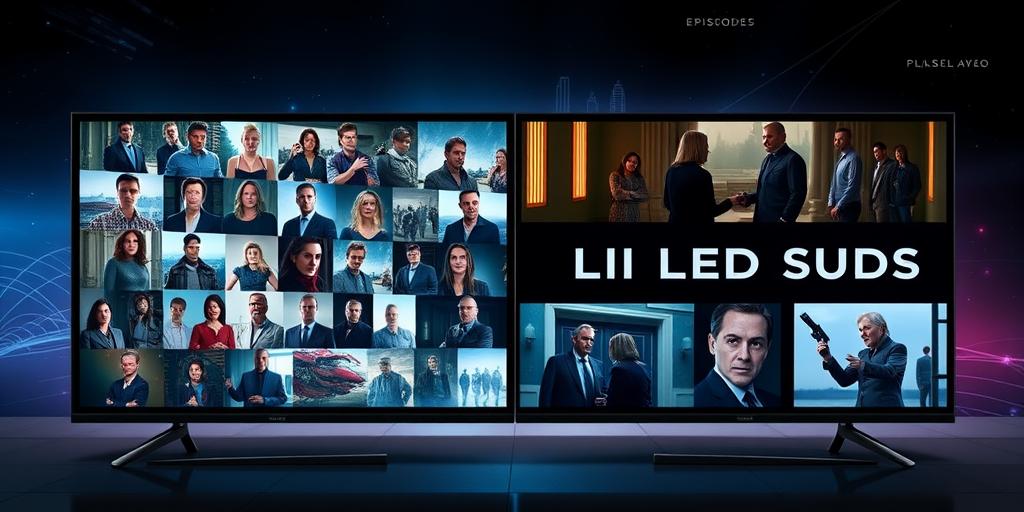The Future of TV Series: Episodic vs. Limited Formats (2025)
The television landscape is in constant flux. As we move into 2025, the debate between episodic and limited series formats continues to shape content creation and viewer consumption habits. This article explores the defining characteristics, advantages, and potential future of both formats.
Understanding Episodic Series
Episodic series, traditionally the backbone of television, present self-contained stories within each episode while contributing to a broader, overarching narrative. Think of classic shows like “Law & Order” or “The X-Files,” where viewers can jump in at any point without missing crucial plot developments.
Key Characteristics:
- Standalone Episodes: Each episode typically features a beginning, middle, and end.
- Recurring Characters: A consistent cast of characters anchors the series.
- Broad Appeal: Designed to attract a wide audience with easily digestible stories.
- Long-Term Potential: Can run for many seasons, building a loyal fanbase.
Advantages:
- Accessibility: New viewers can easily join the series at any time.
- Flexibility: Writers have the freedom to explore diverse storylines without being constrained by a rigid plot.
- Syndication Potential: Standalone episodes are ideal for syndication and repeat airings.
Delving into Limited Series
Limited series, also known as miniseries, offer a complete, self-contained story within a predetermined number of episodes. These series have gained immense popularity in recent years, attracting high-profile talent and critical acclaim. Examples include “Chernobyl,” “The Queen’s Gambit,” and “Mare of Easttown.”
Key Characteristics:
- Defined Narrative Arc: A clear beginning, middle, and end established from the outset.
- Concise Storytelling: Focuses on a specific plot, avoiding filler episodes.
- High Production Value: Often boasts cinematic quality and top-tier performances.
- Prestige Appeal: Attracts acclaimed actors, writers, and directors.
Advantages:
- Creative Control: Allows creators to tell a focused and complete story.
- Attracts Talent: The promise of a defined commitment appeals to actors and filmmakers.
- Critical Acclaim: Often praised for their tight storytelling and high production values.
- Viewer Engagement: Creates a sense of urgency and appointment viewing.
The Future Landscape: 2025 and Beyond
As streaming services continue to dominate the television landscape, both episodic and limited series formats will evolve. Here’s what we can expect:
- Episodic Series: Hybrid models may emerge, blending standalone episodes with more significant overarching storylines. Expect to see more character development and serialized elements woven into traditional episodic formats. The future of episodic series will likely lean into creating deeper connections with viewers through more complex character arcs and evolving relationships.
- Limited Series: The demand for high-quality, character-driven limited series will continue to grow. Streaming platforms will invest heavily in these formats to attract subscribers and generate buzz. We may also see more limited series that serve as spin-offs or continuations of popular episodic shows, offering a fresh perspective on beloved characters and worlds.
Factors Influencing the Shift
Several factors are driving the evolution of TV series formats:
- Streaming Services: Platforms like Netflix, HBO Max, and Disney+ are investing heavily in both formats to cater to diverse viewer preferences.
- Viewer Preferences: Binge-watching culture favors both formats, allowing viewers to consume entire stories at their own pace.
- Talent Availability: High-profile actors and directors are increasingly drawn to television, elevating the quality of both episodic and limited series.
- Technological Advancements: Improved production technologies make it easier to create visually stunning and immersive television experiences.
Conclusion
Both episodic and limited series formats have a vital role in the future of television. Episodic series offer accessibility and long-term engagement, while limited series provide focused storytelling and prestige appeal. As we move further into 2025, anticipate a dynamic interplay between these formats, driven by evolving viewer preferences, technological advancements, and the creative vision of talented storytellers. The future of TV is not about one format dominating the other, but about how they both adapt and thrive in an ever-changing media landscape. The key will be in understanding audience desires and delivering content that resonates, regardless of the format.
